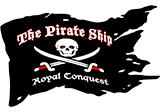Are you a fan of the Pirates of the Caribbean or just interested in the lives of pirates? If you are, then you must be scouring the internet and other references for information about real-life pirates back then.
Sunshine Scenic Tours has you covered! We will take you out on a trip to the golden age of piracy ― the time when pirates roamed the seas.
What was the Golden Age of Piracy?
The era of piracy is the time when pirates ruled the Indian Ocean, Caribbean, West African coast, and North American eastern seaboard. They plundered commercial ― and once in a while even military ― ships to look for loot and treasures.
In contrast to what many people know, not all pirates back then buried the loot and treasures they stole. Some of them divided all the resources among all the crew members.
When was the Golden Age of Piracy?
There are little discrepancies between what many historians say, but the most famous pirates ruled the seas between 1650 and 1730. It was during this era that some of the most remarkable attacks were made. Some of the most notorious pirates in the said period are:
- Edward Teach, more commonly known as Blackbeard
- John Rackham, more commonly known as Calico Jack or Captain Rackham
- Edward Low, also known as Ned, Lowe, or Loe
- Henry Avery, also known as Captain Bridgeman or Long Ben
What Caused the Golden Age of Piracy?
Before the said period, there were already many pirates roaming the seas. If you are wondering why the era of piracy is only between 1650 and 1730, the reason is that it is when the number of attacks increased. Of course, it did not happen in an instant. There are many contributing events that lead to it. Some of which are:
1. Pirates followed the example of those who came before them
Henry Morgan was considered a legend in his own time. He was a privateer and a pirate at the same time, who lived a luxurious life. According to a few accounts, he retired with tons of money — even more than he could spend for the rest of his years. Many oppressed, underpaid, and hard-worked crew members of merchant ships looked up to him and wanted to live a life like his. Historians say that Henry Morgan’s example is one of the reasons why people back then mutinied and considered being pirates.
2. The War of the Spanish Succession ended
During the War of the Spanish Succession, people were allowed to roam the Caribbeans. As a form of serving the king back then, the rulers permitted the privateers to attack and plunder ships bearing an enemy flag. However, when the war was over, these privateers were left in limbo. They hung around docks and ports, thinking about and looking for things to do next. The vacancy then pushed them to continue with what they were doing, even if it meant disobeying the orders of the rulers.
3. The wreck of the West Indies fleet
The West Indies fleet, also known as the Spanish treasure fleet, was a famous ship that sailed in 1715. It carried lots of treasures, including 7,000,000 pesos, and was led by Admiral Don Juan Esteban de Ubilla. Unfortunately, a great hurricane struck the fleet while it was sailing along the straits of Florida. Some of the crew members survived and made their way back to the shore in hopes of informing the Spanish government about what happened.
However, the news about the wreck of the fleet did not just reach Spain. It also reached some other islands and places. The wreck then caused some privateers to go hunting for all the treasures that had not been retrieved yet.
Pirates and Their Treasures
With the causes mentioned, you might think that pirates only cared about gold, silver, money, and jewels. However, that was not always the case. Pirates back then also ran after other things, including:
Food and Drinks
Pirates sailed across different seas for many days, months, and sometimes years. While on their voyages, they needed supplies to survive. Some of the things they plundered from other ships were food and drinks. They looked for casks of rice, dried meats, pickled vegetables, and ― the most important of all ― alcohol. There were also pirates who robbed fishermen of their daily catch.
Trade Goods
Back then, pirates did not really know what they would find on other ships. However, most of the loots they gained were trade goods, including sugar, animal skin, tobacco, wood, cocoa, and spices. They sold these goods to merchants for a lower price. Some of the most pirate-friendly places with unscrupulous merchants are the Bahamas, Nassau, Jamaica, and Port Royal.
Medicine, Tools, and Weapons
For pirates, weapons and tools were as important as gold. They looted these things to fix and equip their ships with cannons. Without such things, they would be taken down by other ships easily. Pistols and swords were among the things they ran after as well. They also plundered medicine as they were often involved in physical battles that resulted in crew members getting wounded and injured.
Slaves
Capturing other people was also other pirates’ goal. Some of them needed captives to work on their ships. In particular, they looked for those crew members they could use for their voyages, including carpenters, surgeons, and map readers. Enslaved people who were not helpful were either killed or sold to merchants.
Why Did the Golden Age of Piracy End?
With pirates ruling the seas, it is hard to imagine how their reign came to an end. The two main reasons that banished the pirates were the increased military presence and the implementation of international anti-piracy laws around 1730.
Hop Aboard A Pirate Ship
If you want to experience what it is like to sail on a pirate ship, we have you covered! At Sunshine Scenic Tours, we offer thrilling pirate ship cruises in St. Pete Beach, FL, and other nearby areas. For inquiries and reservations, contact us today! We look forward to giving you the highlight of your vacation here in Florida.







